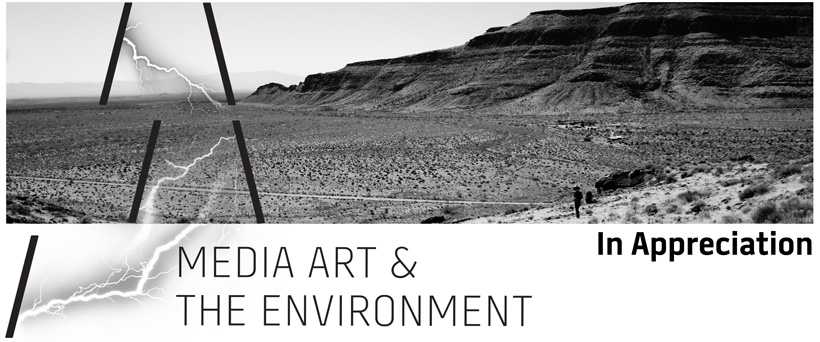
| Such a complex and innovative course was a shared effort among educators, artists, scientists and friends dedicated to creating new learning experiences. | 如此繁複而具創意的課程,有賴多方教育家、藝術家、科學家及好友共同合作,致力創造嶄新的學習體驗。 | ||||
| Our partner at UCLA, the Art/Sci Center and Laboratory led by Professor Victoria Vesna was integral in opening doors for us in the U.S., expertly coordinated by Brenda Williams. Dr. Adam Stieg at the California Nanosystems Institute showed us how scientists are engaging with artists at one of the world’s most sophisticated research laboratories, and leading physicist Dr. Jim Gimzewski met with us to discuss the changing relationship between the sciences and the arts. The Getty Conservation Institute gave us a behind-the-scenes tour demonstrating how scientists in their laboratories are preserving art’s antiquities. Jeff Burke at UCLA’s Center for Research in Engineering, Media and Performance (REMAP) introduced ways that the performing arts are partnering with engineers and scientists. Top media theorist Professor Dick Hebdige of the UC Institute for Research in the Arts joined us in the desert to emphasize how artists must connect more directly with the environment. Each of these encounters clearly demonstrated that the old boundaries between art and science are crumbling. | 我們於加州大學洛杉磯分校(UCLA)的合作伙伴是由Victoria Vesna教授主持的藝術及科學中心(Art|Sci Center + Lab)。該中心的成員Brenda Williams為我們打開了美國當地多方的通路。加州納米研究院(California Nanosystems Institute)的Adam Stieg博士向我們展示領先全球的科研實驗室;頂尖物理學家Jim Gimzewski博士與我們會面,討論科學與藝術日漸演化的關係。蓋提文物保存修護中心 (Getty Conservation Institute) 為我們提供幕後導賞,展示科學家如何在實驗室內保存藝術文物。UCLA的工程、媒體及表演研究中心(REMAP)的Jeff Burke為我們介紹工程師及科學家如何配合表演技術。UCLA人文科學研究所(Institute for Research in the Arts)的頂尖媒體理論學者Dick Hebdige教授來到沙漠與我們會面,強調藝術家應與環境更緊密連繫。這些人與事,皆證明了藝術與科學的舊邊界,正日漸崩解。 | ||||
| The California desert is home to variety of outsider subcultures, and the students also visited fringe science sites like the Integratron and the Museum of Jurassic Technology. In the Mojave, Matt Coolidge of the Center for Land Use Interpretation took us on a tour of alternative, often damaged sites that powerfully showed how the use of desert resources reflects what is best and worst about a culture. We stayed in California State University’s remote research station in an idyllic oasis on the edge of a massive dried lake. The California Desert Studies Consortium staff made our fieldwork possible; my sincere thanks to Dr. William Presch, Rob Fulton, Norma Charest, Jason Wallace and our terrific cook Vic. From this working science field station, we explored the extreme ecosystem and performed our readings. I must also thank our two drivers—Romie Littrell and Steve Ounanian—former students of UCLA and working artists who quickly became friends and collaborators. | 加州沙漠乃多種次文化居停之所,學生亦探訪了邊緣科學地點,包括神秘館(The Integratron)及侏儸紀科技博物館(Museum of Jurassic Technology)。在莫哈韋沙漠裡,土地使用解說中心(Center for Land Use Interpretation) 的Matt Coolidge帶我們尋訪另類的受破壞地段,反映沙漠資源運用如何展露一個文化最好與最壞的面貌。我們在沙漠內的居所是一個由UCLA設立的遙距研究站,位處寧靜綠洲內,毗鄰巨大的乾鹽湖邊。得到沙漠研究中心的成員協助,我們得以進行實地作業。我要衷心感謝William Presch博士、Rob Fulton、Norma Charest、Jason Wallace ,及非常稱職的廚師Vic。於研究站 內,我們探索了極端生態系統,並測量數據。我亦要感謝兩位司機Romie Littrell 與Steve Ounanian ,兩人皆是UCLA的畢業生及全職藝術家,他們短時間內就成為我們的好友與合作伙伴。 | ||||
| In Hong Kong, I owe much to the vision of our Dean, Professor Jeffrey Shaw, our Provost Professor Arthur Ellis, and Dr. David Cheng Xing of the Mainland and External Affairs Office. Dr. Mark Wenig of the School of Energy and Environment and SCM’s Dr. Fu Hongbo helped select the projects and the university’s Communications and Public Relations Office covered the story by sending along their outstanding reporter, Joan Yip Pui Chi. The course was funded through four different research grants at the university and thanks to Associate Dean Dr. Christian Wagner for his help. The SCM office staff, Estella Tong Mei Mei , Ruby Lau Wan Yee, and Doris Poon Wan Yi had the difficult job of managing the complex paperwork and I am deeply appreciative of their patience and cooperation. New ideas are often difficult to start, and everyone invested their time and energy in order to create an innovative learning experience for our students. | 在香港方面,我必須感謝本院獨具慧眼的院長邵志飛教授,以及學務副校長李博亞教授與協理副校長(內地及對外事務)程星博士。能源及環境學院的Mark Wenig博士及創意媒體學院的傅紅波博士協助篩選項目,而大學的傳訊及公關處亦派出出色的記者葉佩芝全程採訪。課程能獲得大學四個獨立的研究基金撥款,須感謝副院長Christian Wagner博士的協助。創意媒體學院的同事湯美媚、劉韻儀及潘韻怡為處理繁瑣的文件費盡心力,我非常感謝她們的耐心與貢獻。啟動新意念一向不易,各人為此投入大量時間與功夫,為學生創造前所未有的學習體驗。 | ||||
| And finally, I’d like to thank and commend our 15 students who braved brutal heat, desert winds, driving rain, a shouting professor and, well, Los Angeles traffic jams to make their art. I am very proud of their amazing projects but also proud that our school is at the forefront of bridging the arts and sciences. | 最後,我要感謝並讚賞15位學生,他們挺著沙漠的酷熱氣候、陣風、暴雨,加上不時呼喝的教授,還有洛杉磯擠塞的交通,創作出一件件藝術品。我對他們的創作深以為傲,亦為本學院能成就藝術與科學的橋樑,感到榮幸。 | ||||
Thank you all for your support. |
感謝你們的支持。 |
||||
Associate Professor Scott Hessels |
Scott Hessels副教授 監製、課程主任 香港,2012年5月 |
||||
|
|||||